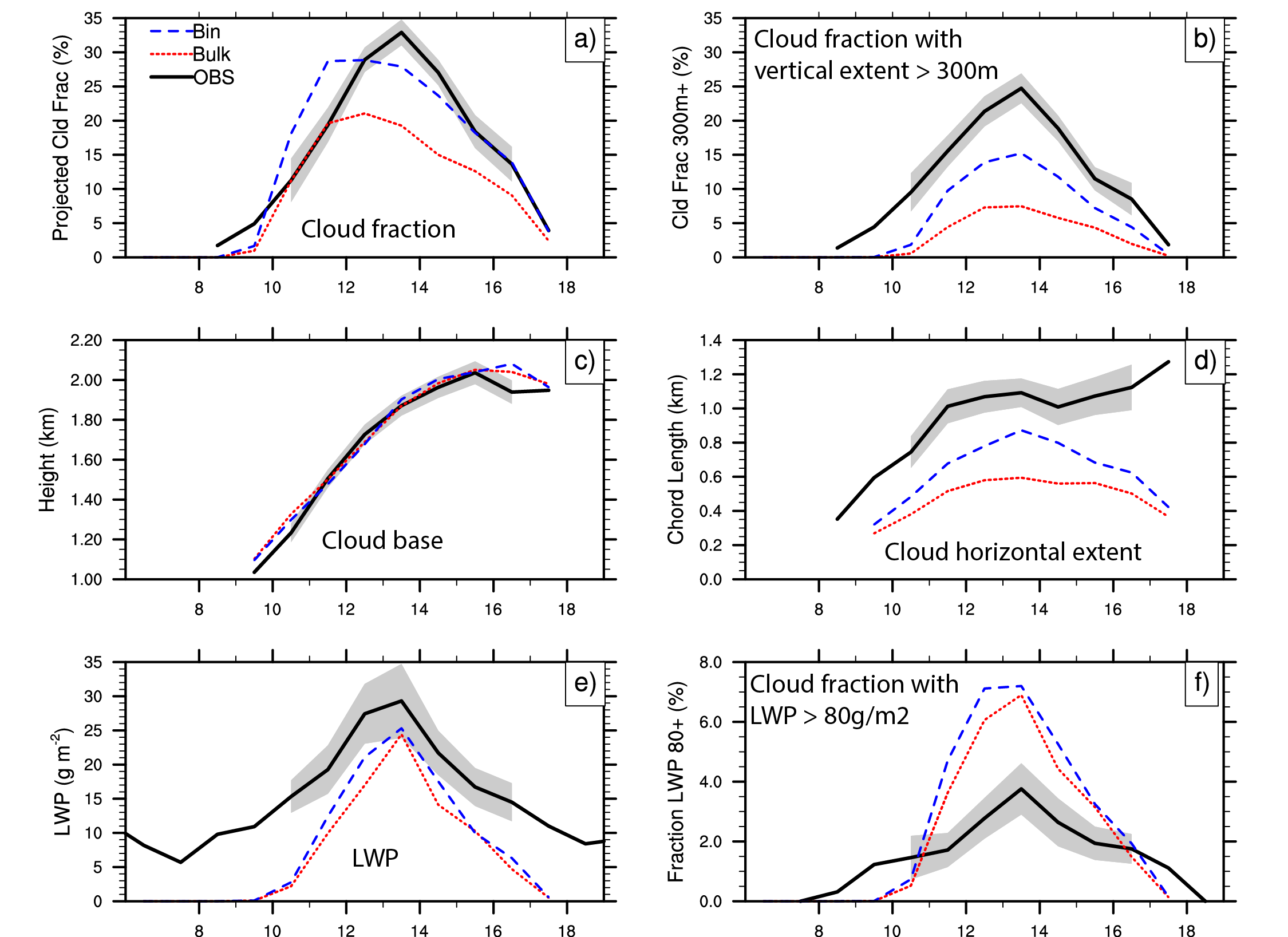A New Composite Modeling Case for Continental Active Surface-forced Shallow Cumulus (CASS
Submitter
Klein, Stephen — Lawrence Livermore National Laboratory
Zhang, Yunyan — Lawrence Livermore National Laboratory
Area of research
Cloud Processes
Journal Reference
Science
Lawrence Livermore National Laboratory scientists and collaborators endeavored to build a composite modeling case to best represent the most typical surface-forced, active fair-weather shallow cumulus over land based on ARM long-term observations at the Southern Great Plains atmospheric observatory.
Impact
This modeling case, “Continental Active Surface-forced Shallow cumulus (CASS),” consists of both forcing data to drive the model and observed cloud statistics to evaluate the model. CASS may draw the attention of the modeling and observational communities to serve as a new test case for both the cloud-scale large-eddy simulation (LES) studies and the development of convection and cloud parameterizations in large-scale models.
Summary
The CASS represents a typical daytime non-precipitating ShCu whose formation and dissipation are driven by the local atmospheric conditions and land-surface forcing, and not influenced by synoptic weather events.
The case includes: early morning initial profiles of temperature and moisture with a residual layer; diurnally varying sensible and latent heat fluxes that represent a domain average over different land surface types; simplified large-scale horizontal advective tendencies and subsidence; and horizontal winds with prevailing direction and average speed. Observed composite cloud statistics are provided for model evaluation.
CASS data are available to the public via http://portal.nersc.gov/project/capt/CASS/
The study shows that the observed diurnal cycle is well reproduced by LES; however, the cloud amount, liquid water path, and shortwave radiative effect are generally underestimated. LES are compared between simulations with an all-or-nothing bulk microphysics and a spectral bin microphysics. The latter shows improved agreement with observations in the total cloud cover and the amount of clouds penetrating deeper than 300 meters. When compared with ARM radar retrievals of in-cloud air motion, LES produce comparable downdraft vertical velocities, but a larger updraft area, velocity, and updraft mass flux. Both observation and LES show a significantly larger in-cloud downdraft fraction and downdraft mass flux than marine ShCu in previous studies.


